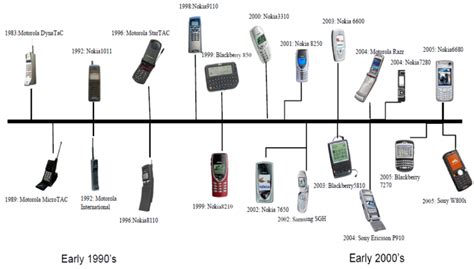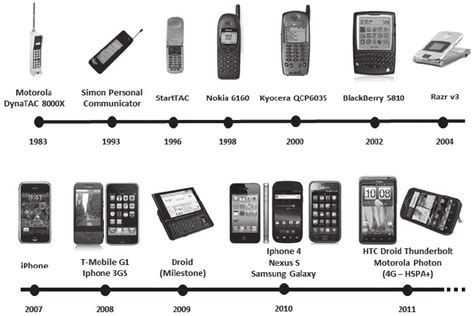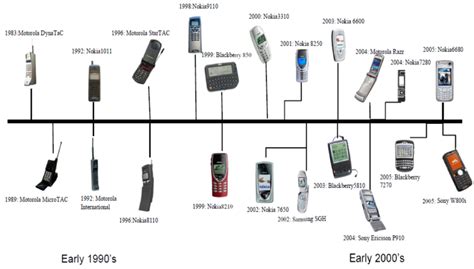Hello Mobile Phones Evolution

The evolution of mobile phones has been a remarkable journey, marked by significant technological advancements and design innovations. From the first bulky devices to the sleek, feature-rich smartphones of today, mobile phones have revolutionized the way we communicate, access information, and navigate our daily lives. The first mobile phone call was made in 1973 by Martin Cooper, an engineer at Motorola, who called a rival telecommunications company to declare that he was speaking from a cell phone. This breakthrough marked the beginning of a new era in personal communication.
Over the years, mobile phones have undergone a series of transformations, driven by advances in technology, changes in consumer behavior, and the rise of new players in the market. The 1980s saw the introduction of the first commercial mobile phones, which were often cumbersome and expensive. However, as the technology improved and prices decreased, mobile phones became more accessible to the masses. The 1990s witnessed the emergence of digital mobile phones, which offered better call quality, longer battery life, and new features such as text messaging and internet browsing.
Key Points
- The first mobile phone call was made in 1973 by Martin Cooper, an engineer at Motorola.
- The 1980s saw the introduction of the first commercial mobile phones, which were often cumbersome and expensive.
- The 1990s witnessed the emergence of digital mobile phones, which offered better call quality, longer battery life, and new features such as text messaging and internet browsing.
- The introduction of smartphones in the late 2000s revolutionized the mobile phone industry, with devices such as the iPhone and Android phones offering a wide range of features and applications.
- Today, mobile phones are an essential part of modern life, with billions of people around the world using them to communicate, access information, and navigate their daily lives.
The Rise of Smartphones

The introduction of smartphones in the late 2000s marked a significant turning point in the evolution of mobile phones. Devices such as the iPhone and Android phones offered a wide range of features and applications, including touch screens, app stores, and high-speed internet connectivity. Smartphones enabled users to access a vast array of services and information on the go, from social media and email to online banking and navigation. The rise of smartphones also led to the development of new industries and business models, such as mobile commerce and mobile advertising.
Technological Advancements
One of the key drivers of the mobile phone evolution has been technological advancements. Improvements in areas such as processor speed, memory, and battery life have enabled mobile phones to become smaller, faster, and more powerful. The development of new materials and manufacturing techniques has also led to the creation of more durable and sustainable devices. Additionally, advances in areas such as artificial intelligence, machine learning, and the Internet of Things (IoT) are expected to further transform the mobile phone industry in the coming years.
| Year | Notable Development |
|---|---|
| 1973 | First mobile phone call made by Martin Cooper |
| 1983 | First commercial mobile phone released |
| 1993 | First digital mobile phone released |
| 2007 | iPhone released, marking the beginning of the smartphone era |
| 2010 | Android phones become popular, offering an alternative to iOS |

Future Developments

Looking ahead, the mobile phone industry is expected to continue evolving at a rapid pace. The introduction of 5G networks, for example, promises to enable faster data speeds, lower latency, and greater connectivity. The development of new technologies such as foldable displays, augmented reality, and quantum computing is also expected to transform the mobile phone landscape. Additionally, growing concerns around issues such as e-waste, energy consumption, and digital addiction will require mobile phone manufacturers to prioritize sustainability and social responsibility in their design and production processes.
What was the first mobile phone call made of?
+The first mobile phone call was made by Martin Cooper, an engineer at Motorola, in 1973. The call was made using a device that weighed around 2.4 pounds and had a talk time of around 30 minutes.
What is the difference between a mobile phone and a smartphone?
+A mobile phone is a device that enables users to make and receive phone calls, send text messages, and access basic services such as calendar and contacts. A smartphone, on the other hand, is a device that offers a wide range of features and applications, including touch screens, app stores, and high-speed internet connectivity.
What is the future of mobile phones?
+The future of mobile phones is expected to be shaped by continued advancements in areas such as AI, 5G, and IoT, as well as growing concerns around issues such as privacy, security, and sustainability. The development of new technologies such as foldable displays, augmented reality, and quantum computing is also expected to transform the mobile phone landscape.
Meta Description: Discover the evolution of mobile phones, from the first bulky devices to the sleek, feature-rich smartphones of today. Learn about the key developments, technological advancements, and future trends shaping the mobile phone industry. (149 characters)



